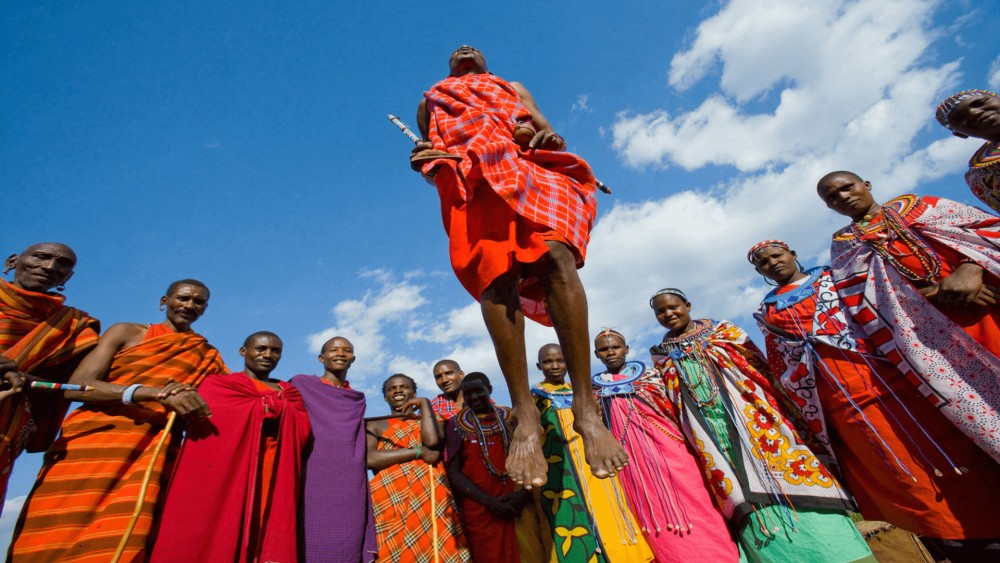Tanzania is a country with a rich and diverse cultural heritage. From the ancient rock paintings of the Hadzabe people to the vibrant Swahili culture of Zanzibar, Tanzania is home to various artistic practices, languages, music, dance, crafts, and historical sites. However, this rich cultural heritage is under threat.
The rapid advancements of the digital age are profoundly impacting traditional cultural practices. Urbanization, globalization, and changing social dynamics all contribute to the erosion of conventional ways of life.
This article will explore the significance of preserving Tanzania’s cultural heritage in the digital age. We will discuss the challenges of modernization and how embracing technology can be a powerful tool in safeguarding and promoting the country’s diverse cultural identity.
The Wealth of Tanzania’s Cultural Heritage
Tanzania has over 120 ethnic groups, each with its unique cultural heritage. This diversity is reflected in the country’s languages, music, dance, crafts, and traditional practices.
Some of the most well-known examples of Tanzania’s cultural heritage include:
- The rock paintings of the Hadzabe people over 10,000 years.
- The Swahili culture of Zanzibar is a blend of African, Arab, and Indian influences.
- The Maasai culture is known for its distinctive dress, warrior traditions, and cattle herding.
- The Chagga culture is known for its coffee production and elaborate traditional dress.
- The Makonde culture is known for its wood carving and body art.
- These are just a few examples of the many cultural treasures that Tanzania has to offer. This rich cultural heritage is vital to what makes Tanzania a unique and fascinating country.
Threats to Cultural Heritage
The rapid advancements of the digital age pose several challenges to Tanzania’s cultural heritage. Urbanization leads to the displacement of traditional communities and the loss of cultural practices. Globalization brings new cultural influences to Tanzania, which can lead to the erosion of traditional values. And changing social dynamics, such as the rise of the internet and social media, are making it easier for people to adopt new cultural practices worldwide.
As a result of these challenges, many traditional cultural practices in Tanzania are in danger of disappearing. This is a loss that all Tanzanians would feel, as it would deprive the country of its unique cultural identity.
Digitization and Cultural Preservation
Digital technologies can be a powerful tool in safeguarding Tanzania’s cultural heritage. By digitizing cultural artifacts, sites, and knowledge, we can preserve them for future generations.
There are a number of ways to digitize cultural heritage. One way is to create virtual reality (VR) experiences that allow people to explore cultural sites in a realistic way. Another way is to use 3D scanning to create digital models of cultural artifacts. And finally, we can create online archives that store information about cultural heritage.
Knowledge bearers can share their wisdom with a global audience through these platforms, sparking interest and appreciation for Tanzania’s cultural diversity.
Digitization can help preserve Tanzania’s cultural heritage in several ways. First, it can help to protect cultural artifacts and sites from damage or destruction. Second, it can make cultural heritage more accessible to people worldwide. And third, it can help to raise awareness of Tanzania’s cultural heritage.
Empowering Local Communities
It is essential to empower local communities to safeguard their cultural heritage. This can be done through several initiatives, such as training local artisans in traditional crafts, supporting community-led cultural preservation projects, and creating educational programs about cultural heritage.
Technology can play a crucial role in this endeavor. Local artisans, storytellers, and custodians of cultural practices can revive and sustain traditional crafts and performances by providing access to digital tools and training. Online marketplaces can be platforms to showcase and sell authentic cultural artifacts, providing artisans with new avenues to share their creations with the world while ensuring fair compensation for their efforts. These initiatives preserve cultural heritage and offer economic opportunities to the communities involved.
Balancing Modernity and Tradition
In the digital age, it is essential to balance embracing technological advancements and preserving traditional cultural practices. We should not let technology become a threat to our cultural heritage. Instead, we should use it to enhance and promote our culture.
One way to do this is to create digital platforms that allow people to learn about and engage with traditional cultural practices. For example, we could create online courses that teach people how to make crafts or perform traditional music and dance. We could also create virtual museums that allow people to explore cultural sites worldwide.
By balancing modernity and tradition, we can ensure that Tanzania’s culture remains a source of pride and identity for its people.
My perspective
As a tech-savvy individual with a deep love for my country’s cultural traditions, I recognize technology’s immense potential in preserving and promoting Tanzania’s culture. I firmly believe that embracing technology can amplify our efforts to protect and encourage Tanzania’s identity, ensuring it remains alive and relevant in the digital age.
I am excited about the potential of technology in promoting our heritage to a global audience. Online platforms and social media enable us to showcase our cultural practices, art, and crafts to people worldwide. Through these digital channels, we can shatter stereotypes and foster cross-cultural understanding, fostering a deeper appreciation for Tanzania’s rich cultural tapestry.
Tanzania’s culture is a precious gem that should be safeguarded and cherished in the digital age. Through the thoughtful integration of technology, we can document, preserve, and promote the rich tapestry of traditions, languages, art forms, and historical sites that make Tanzania a cultural marvel.
Empowering local communities to be the stewards of their heritage and striking a balance between modernity and tradition will ensure that Tanzania’s cultural legacy continues to thrive for future generations. Let us embrace the digital era as an opportunity to celebrate and protect the essence of Tanzania’s cultural identity.
Read more insightful articles here.

